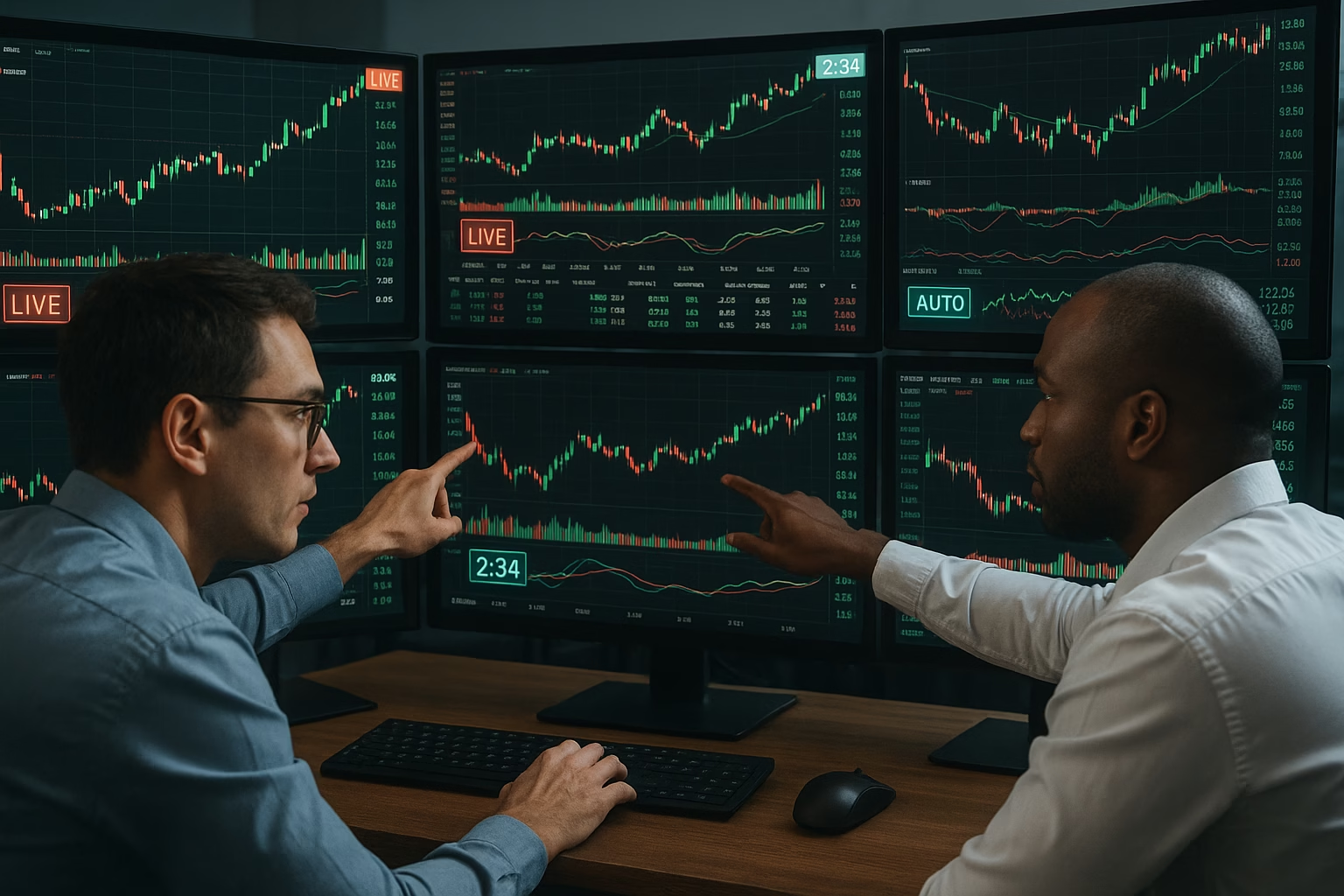What is Day Trading and Why Minimum Balance Matters
Day trading involves buying and selling financial instruments within the same trading day to capitalize on small price movements. Quick decision-making, technical knowledge, and sufficient capital are essential. The day trading minimum balance, also called the Pattern Day Trader (PDT) rule, is set by FINRA. Traders making more than four day trades within five business days must maintain at least $25,000 in their account.
Why it matters:
- Protects traders from significant losses
- Ensures sufficient capital for multiple trades
- Helps maintain compliance with financial regulations
Day Trading Minimum Balance Across Popular Platforms
Robinhood
- Adheres to the PDT rule
- Minimum balance required: $25,000
- User-friendly interface with commission-free trades
Fidelity
- Also follows the PDT rule
- Minimum balance required: $25,000
- Provides extensive tools and educational resources for traders
Other Platforms with No Minimum Balance
- Some brokers allow day trading without the $25,000 requirement
- May have limitations or higher fees
- Ideal for beginners seeking flexibility, but research carefully
Importance of Capital Management in Day Trading
Maintaining sufficient capital goes beyond meeting the minimum balance. Proper fund management helps manage risks and take advantage of market opportunities.
Tips for capital management:
- Diversify Investments: Spread your funds across different assets to reduce risk
- Set Stop-Loss Orders: Limit potential losses and avoid emotional decisions
- Stay Informed: Track market news and trends for smarter trades
Click Here To Start Futures Trading Automation For Free
Day Trading Minimum Balance and Automation Tools
While platforms set a minimum balance, tools like PickMyTrade automation can enhance day trading efficiency:
- Automatically execute trades based on pre-defined strategies
- Reduce human error and emotional decision-making
- Monitor markets 24/7 for timely entry and exit points
Pairing PickMyTrade automation with proper account management allows traders to maintain discipline and optimize performance even in volatile markets.
Key Strategies for Successful Day Trading
To make the most of your day trading minimum balance, consider these strategies:
- Technical Analysis: Study charts and indicators to predict price movements
- Risk Management: Define risk levels for each trade and stick to them
- Continuous Learning: Keep up with new strategies, market trends, and trading tools
Conclusion: Maximizing Day Trading Success
Understanding the day trading minimum balance is crucial for compliance, risk management, and long-term success. Whether using Robinhood, Fidelity, or flexible platforms, maintaining proper capital and leveraging automation tools like PickMyTrade can significantly enhance trading efficiency and results.
By combining knowledge, strategy, and automation, traders can confidently navigate the fast-paced world of day trading.
Disclaimer: This article is for informational and educational purposes only. It should not be considered financial, investment, or trading advice. Trading stocks, futures, and other financial instruments involves risk and may not be suitable for all investors. Always conduct your own research or consult with a licensed financial advisor before making trading decisions.
Also Checkout: Automate TradingView Indicators with Tradovate Using PickMyTrade
FAQs About Day Trading Minimum Balance
The Pattern Day Trader (PDT) rule requires $25,000 for accounts making more than four day trades in five business days.
No, Robinhood enforces the PDT rule. You can still make occasional trades but not frequent day trades.
Yes, some platforms allow day trading with smaller balances but may have other limitations or fees.
PickMyTrade automates trade execution, reduces human error, and allows you to act on market alerts 24/7.
No, long-term investing does not require the $25,000 PDT minimum; it only applies to frequent day trading.






I like how you mentioned capital management strategies like stop-loss orders. In my experience, they are vital, but it’s still tough to stick to them when the market moves quickly. Any advice on how to stay disciplined, especially when emotions come into play?
That’s a great point — sticking to stop-loss rules is one of the hardest parts of trading. One trick that helps is automating your exits — set your stop-loss and take-profit orders the moment you enter a trade so emotion doesn’t have a chance to interfere. Also, risk only a fixed small percentage per trade (like 1%), so even a loss feels manageable. Over time, treating your trading plan like a checklist instead of a reaction to price swings really strengthens discipline.